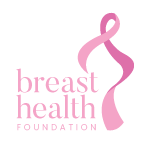Did you know that 70% of all breast cancer is found through self-checking? That’s why we believe it’s of vital importance that everyone learns and knows how to do a self-breast check. Watch the tutorials below so you too can learn how to self-check, because it may just save your life. Knowledge is power in the fight against breast cancer so let’s stand together, empower ourselves and #ClearTheStigma. These educational videos are brought to you by Jet and the Breast Health Foundation.
Phumeza: Breast Examination
Breast cancer affects 1 in 28 women in South Africa. Yet there are hardly any uncensored, bare-breasted self-check tutorials out there for South African women to access.
The inspiring heroine, Phumeza Langa, shows us how to do a self-check breast examination.
Be brave. Together we can #ClearTheStigma around breast cancer.
Mbali: Breast Examination
70% of breast cancer is found through self-checking. Yet there are hardly any accessible bare-breasted self-check tutorials out there for South African women to access.
Mbali Maphumulo, fearless, two times breast cancer survivor, takes us through a step-by-step self-check breast examination.
Spread less fear and more hope. Together we can #ClearTheStigma around breast cancer.
Phemelo: Breast Examination
Finally, a self-check breast examination video made for real women with real breasts. It's important to know how to self-check.
The courageous Phemelo Segoe, shows us exactly how to do a self-check breast examination at home.
We need to know more about breast health so that we can #ClearTheStigma around breast cancer.
Lebohang: Breast Examination
95% of women survive breast cancer if detected early. That's why self-checking is so important. Yet, many South African women don’t know how to self-check.
The brave Lebohang Motsoeli addresses the stigma around breast cancer and shows us how easy it is to do a self-check breast examination.
Know your normal and help spread less fear, more hope and #ClearTheStigma.
Studies have shown that it is possible to reduce the number of women dying from Breast Cancer by 45% using very simple measures. These include understanding your risk of having Breast Cancer based on your personal and family history, and being screened regularly for Breast Cancer.
What does screening involve?
Early detection is the key to better outcome with Breast Cancer. If a cancer is picked up very early, the risk of spread is low and there is more likelihood it can be treated with simple measure such as surgery. The later a cancer is picked up, the more aggressive treatment has to be, and the higher the likelihood of dying from the cancer.
There are many measures you can take to pick up cancer early and decrease your risk of dying. It can involve a number of different types of examinations, which include breast self-examination, clinical breast examination by your doctor or breast specialist, mammography, ultrasound (breast sonar), and magnetic resonance imaging (MRI).
Breast Self-Examination
During breast self-examination, a woman takes time to examine her breasts and get used to the way they feel and look. She checks her breast for any differences, which might include a change in the size or shape of the breast, any irregularities in the skin, any changes in the nipple and any lumps in the breast or under the arm. It is a free and easy way for women to get used to noticing any changes in the breast, and we recommend you carry out breast self-examination monthly, at the same time in your cycle if still menstruating, or on the same day each month.
Clinical Breast Examination
A clinical breast examination is an examination of the breasts which is done by a healthcare professional. It includes not only a physical examination, but time spent by the doctor listening to any symptoms or concerns the patient has, and discussing breast health. Although there is little evidence that clinical breast examination plus mammography is better than mammography alone, we believe it is important to keep close contact with your doctor or breast specialist so that you are clear about what to do if you notice a symptom.
Mammogram
Mammography is an examination of the breast using a low-dose of X-rays to look at any abnormalities within the breast. It requires you to stand beside the mammography X-ray machine and place your breast on a pad, where the X-rays will take an image of the breast from at least two views. Studies have shown that annual mammograms significantly reduce the amount of women over the age of 40 years who will die from Breast Cancer.
Older mammography uses photographic film to record the pictures, but newer better technology allows digital mammography, where the picture is recorded in a computer and can be more carefully looked at. This is particularly useful in women with dense breast and younger women before the menopause (still having periods).
Ultrasound
Ultrasound (breast sonar) is another imaging method to look inside the breasts. It uses high-frequency sound waves to echo back a picture of the structures inside the breast. It can be used to evaluate abnormalities found on clinical examination and mammography, and it is particularly good for looking at breasts of younger women, and looking for infections in the breast.
The accuracy of an ultrasound is highly dependent on the skill of the technician or doctor carrying out the test. That sometimes means that tests need to be repeated or errors in what is seen.
Magnetic Resonance Imaging
MRI is another method of imaging the breast using yet another modern technology. It uses a magnetic field to provide the doctor with a three-dimensional image of the breast. It also requires injection of a dye into your blood, which will help the MRI demonstrate normal from abnormal. It is an expensive test and not often necessary to diagnose abnormalities.
MRI is useful in patients who have inherited disorders such as BRCA genes or a higher than normal risk of Breast Cancer with ‘difficult to read’ breasts.
